Key Points
A jaw bone can become weakened by periodontal (gum) disease, thus a spontaneous fracture with minimal trauma can occur
The key to getting a fractured jaw bone to heal is to remove infected teeth if present, and aligning the teeth properly
Usually wires are used to repair fractures of the jaw bones
Prognosis is usually favorable
Anatomy
- The lower jaw bone is called the mandible; there is a left and a right mandible that makes the entire lower jaw
- The mandibles have joints that allow the mouth to open and close very smoothly
- The mandibles have a hollow canal through which nerves and blood vessels are housed
- The upper jaw is called the maxilla
- The back part of the jaw is covered with muscles that are used to open and close the mouth
- The teeth of the mandibles and maxilla usually interdigitate or have good occlusion
- The teeth are rooted in sockets in the mandible and maxilla
Causes of jaw fractures
- Falling onto face from a significant height
- Gun shot wounds to the face
- Motor vehicular accidents
- Blow to the face
- Weakening of the jaw caused by
- Severe gum disease (periodontal disease) which causes erosion of the jaw bone; occasionally a jaw bone will fracture when teeth are removed if the jaw bone is weakened by advanced periodontal disease
- All meat diet
- Supplementation with improper ratio of calcium and phosphorus
- Chronic kidney disease
- Osteogenesis imperfecta – congenital disease
- Cancer of the jaw bone
Principles of jaw fracture repair
- Alignment of the jaw so that the teeth line up in normal position is critical for healing of the fracture
- Remove all loose teeth or teeth that have periodontal disease at the level of the fracture
- If the tooth root has been involved a root canal procedure may be required
- Careful suturing of gums
- Follow aftercare instructions closely
Case examples
Below left is a fracture of the mandible behind the canine tooth; below right is the repair of the fracture with two wires and a screw

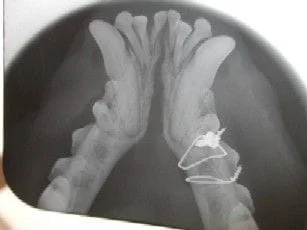
- Below left is a fracture of the back part of the mandible; below right shows the repair of the fracture with a plate and screws
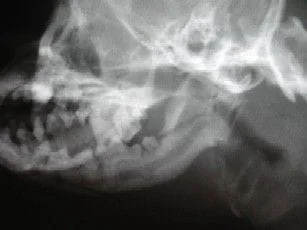
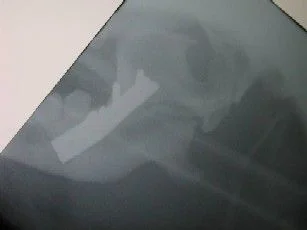
- Below left is a fracture of the mid portion of the mandible; below right shows a repair of the fracture using a wire and a screw; care must be taken to prevent damage to the roots of teeth, and teeth that have not yet erupted though the gums in this very young puppy
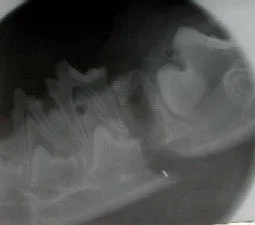
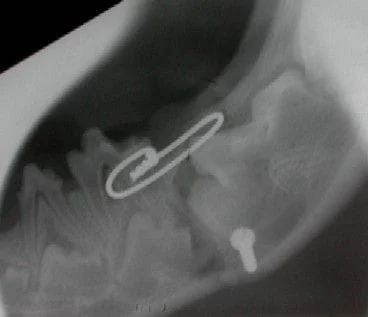
- Below left is a dog that has a dislocated jaw joint; after the jaw joint (TMJ) is reduced back in place, a gauze muzzle was applied for 2 weeks to prevent the jaw from dislocating again
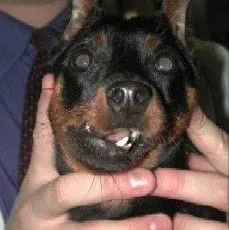
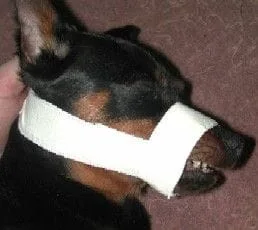
Aftercare
- Pain medication
- Antibiotics
- Minimal manipulation of the mouth during administration of oral medication
- Sometimes the mouth may need to be rinsed with antiseptic such as NolvadentR if open wounds or exposed wires are in the mouth
- Feed only canned food which is softened with water to a gruel consistency until the fracture has been determined to be healed with radiographs (about 8 weeks)
- Do not allow chew toys or treats during the healing phase
- Examinations with us at 2 weeks, radiographs made by us at 8 weeks after surgery
- If exposed wires were used to repair a fracture, they will need to be removed at 8 weeks, providing that the fracture has healed


